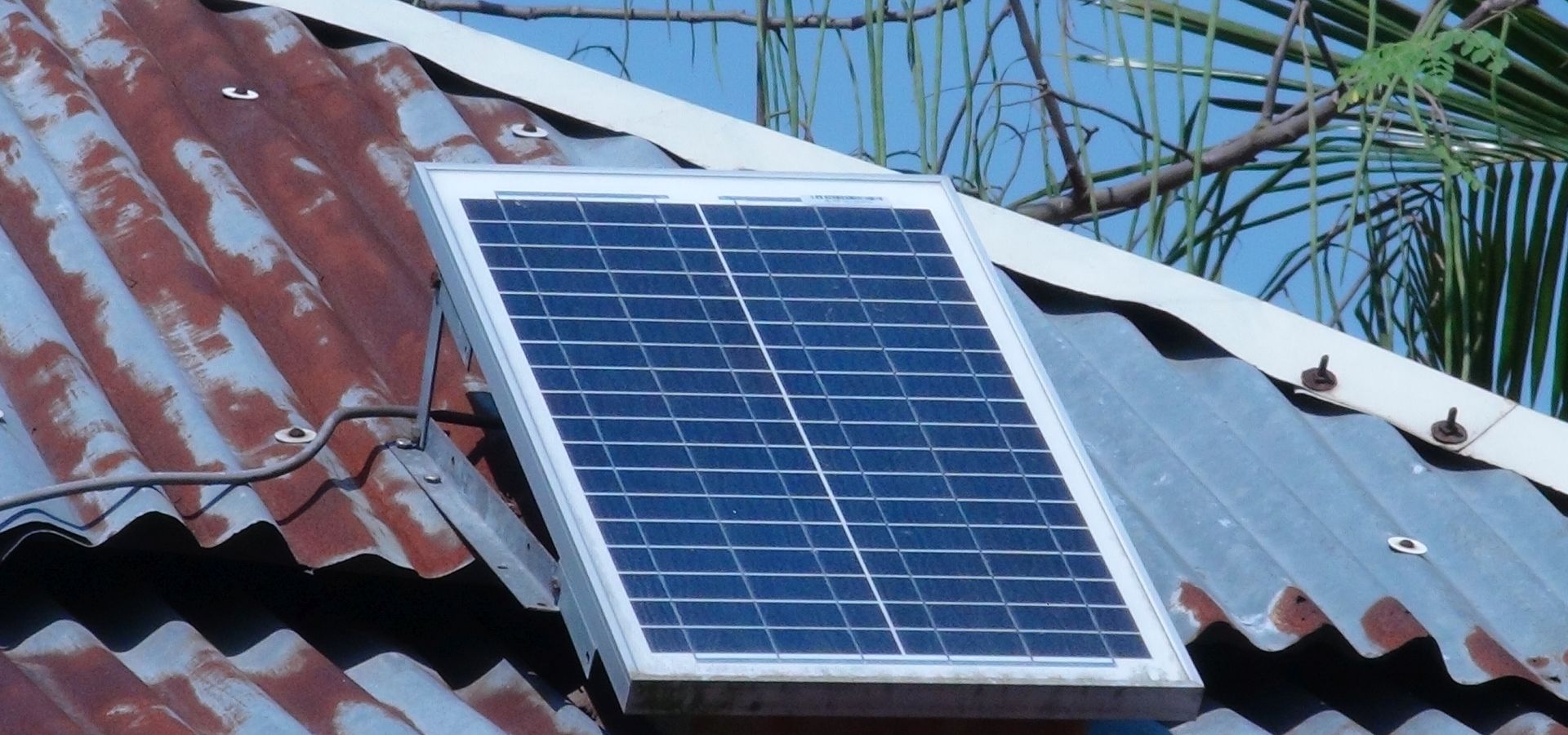In Bangladesh, government programs and startups are using solar to improve standards of living and agriculture. The small systems can have a huge impact on people’s lives, and act as an economic motor. Andrew Burger of MicroGrid Media has the details.

Solar in Bangladesh is taking off (Photo by Helena Wright, edited, CC BY 4.0)
Bangladesh has been a pioneer when it comes to both micro finance and micro solar. Natural complements, their combination has led to a boom in what’s being called “swarm electrification” – development of local nanogrids and microgrids that allow solar homeownwers to sell surplus electrical power directly to other microgrid participants via peer-to-peer (P2P) networks.
Young Bangladeshi start-ups are key players in Bangladesh’s fast moving distributed renewable energy industry and market. ME SOLshare, for example, installs home solar PV-storage systems that incorporate SOLBox, a network device that enables homeowners to buy electricity as needed by paying for tokens via mobile phone SMS, Energy Matters reports.
SOLBox also enables solar homeowners to sell surplus electricity to their neighbors via P2P networks, an innovation that earned ME Solshare one of 13 2016 UN Momentum for Change Awards.
The Seeds of a “Green” Energy Economy

Seventeen million of Bangladesh’s 29 million households lack access to grid power, according to national statistics, relying on fossil fuels and traditional biomass for lighting and power. That’s taking a heavy toll on the ecosystems and natural resources that underlie and support society and the economy.
In 2014, Bangladeshi Prime Minister Sheikh Hasina launched a program that aims to double the number of solar homes in the country to 6 million. Three million solar-battery storage systems had been installed via the DCOL SHS Program as of the program’s launch, Energy Matters points out.
Consisting of a PV panel, a battery and a charge controller, the PV systems installed via the DCOL SHS program are very small, averaging just 39 watts, but even that can make a huge difference in people’s lives.
In addition to providing environmentally friendly home lighting and power, the program has created some 39,000 jobs, for instance, according to Energy Matters.
Bangladesh’s new SHS Program target is part and parcel of a larger plan to install 24,000 MW of power generation capacity nationwide by 2021. Ten percent is to be solar power generation. More broadly, Bangladesh has set a goal of renewables producing 15 percent of Bangladesh’s electricity by 2020.
Solar Electrification in Rural Bangladesh
More than 3.9 million solar home systems have been installed in Bangladesh as a result of the government’s Rural Electrification and Renewable Energy Development (RERED) and RERED II Projects. More than 20 million Bangladeshi’s are benefiting as a result, Sheuli Akter reports in a June 2016 article in Tuck Magazine.
Using solar to improve agriculture is another facet of the program. The project had introduced and installed 321 solar irrigation pumps to date, replacing more expensive and polluting diesel-fueled irrigation pumps. More than 8,000 farmers are reaping the benefits, which include lower irrigation costs, less imports and loss of foreign currency reserves, as well as lower greenhouse gas (GHG) emissions.
Taking things a step further, seven renewable energy-based mini-grids (combined capacity 966-kWp) are supplying electricity in remote communities in Rajshahi, Narsingdi, Kurigram and Bhola provinces.
Another nine renewable mini-grids (combined capacity 1,071-kWp) are under construction, while construction of an additional four (combined capacity 736-kWp) are due to begin construction shortly.
This post has been republished with permission from MicroGrid Media.
The Author: An experienced, well traveled independent reporter and researcher with a BA geology and MBA finance, Andrew Burger reports on developments at the nexus of energy, society and the environment for Microgrid Media and several other digital media outlets.
Bangladesh is good on microgrids, but its grid supply policy is catastrophic. The government is still planning a massive expansion of coal generation, with one plant in the famous Sundarban mangrove forest, in spite of protests in the communities affected. It has bought one solar utility farm (IIRC without an auction, Craig please note that auctions have the merit of transparency) at a suspiciously high price, twice the going rate in neighbouring India. It is arguing that the densely populated country can’t afford to lose the agricultural land to solar, ignoring experience with dual use and the Indian practice of panels over irrigation canals.
Great article thanks for taking your time to share.